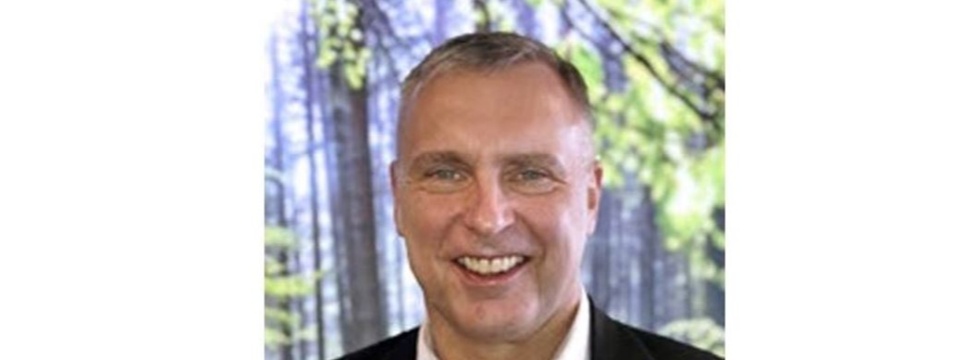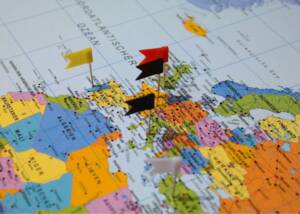Norske Skog: Significant progress on green growth projects
News General news
Norske Skog’s EBITDA in the fourth quarter of 2020 was NOK 146 million, an increase from NOK 73 million in the third quarter of 2020, as a result of increased sales volume and favourable cost development. Despite improvements in the fourth quarter, the markets have not returned to pre-COVID-19 levels. In the fourth quarter, Norske Skog experienced significant progress on several of its green growth projects, such as the containerboard and energy projects at Bruck and Golbey, and fibre projects at other units.

- Although the corona restrictions have had a severe negative impact on our operations, we have managed to both stabilise our publication paper operations and continue the development of our green growth projects. Our publication paper capacity has been adjusted in response to the adverse market development in light of COVID-19, to ensure future profitability. Each publication paper mill are now conducting studies to transform their operations to ensure sustainable industrial sites with a long-term potential, says Sven Ombudstvedt (photo), CEO of Norske Skog.
Cash flow from operations was NOK 73 million in the quarter compared to NOK 115 million in the previous quarter, mainly due to a reduction of inventory and accrued CO2-compensation to be paid in 2021. Operating earnings in the fourth quarter of 2020 were NOK -1 276 million compared to operating earnings of NOK -31 million in the third quarter of 2020. The quarter was significantly affected by non-cash change in accounting treatment of energy contracts in Norway amounting to NOK 1 129 million, and property, plant and equipment impairments at Boyer, Saugbrugs and Skogn amounting to NOK 258 million. Net loss in the quarter was NOK -1 363 million compared to a net loss of NOK -89 million in the previous quarter. For the entire 2020, Norske Skog recorded a net loss of about NOK –1 884 million, which were affected by the same items as stated above. Net interest-bearing debt was NOK 725 million at the end of the fourth quarter, with an equity ratio of 41%. Due to the on-going strategic shift of the company, the board of directors has decided not to propose to the general meeting any dividend for 2020.
Status projects
Norske Skog plans to become a leading European producer of recycled containerboard by converting two newsprint machines, one at Bruck and one at Golbey. The conversions will introduce 765,000 tonnes of competitive containerboard capacity to meet the growing demand for renewable packaging. Detailed engineering for the containerboard projects in Austria and France are on track for final investment decision in the first half of 2021. Following the conversions, both mills will have access to renewable energy and will have reduced their carbon footprints to become among the best performers in the industry. The approximately EUR 350 million investment is expected to be financed with debt, partially guaranteed by Export Credit Agencies (ECA), and cash on balance. The installment of a 50 MW renewable waste-to-energy boiler in Austria is progressing according to plan, and the boiler is scheduled for start-up in the first half of 2022.
Norske Skog actively works to realise value from the industrial sites by developing existing infrastructure and industry competence. Norske Skog ceased newsprint production at the Tasman mill at the end of the fourth quarter, and now delivers converting grade paper to customers in the Asian packaging market. The Tasmanian forest was sold in June, and the Boyer mill entered into a long-term wood purchase agreement with the new forest owner. In New Zealand, the recent scale-up of wood pellets production capacity has been highly successful and the facility now produces around 90,000 tonnes.
Norske Skog is the largest shareholder in Circa Group, which during the fourth quarter received a EUR 11.6 million EU Flagship Grant for the production of a first-of-its-kind 1,000 tonnes biochemicals plant in France. Circa Group is contemplating a listing on the Euronext Growth in Oslo during the first quarter of 2021 to raise the required capital for construction of the plant and continued market introduction of its biochemicals. Following significant marketing efforts and customer testing in 2020, CEBINA is now sold and delivered to customers in Norway and internationally. CEBINA is a natural fibre product developed at Norske Skog Saugbrugs, which add rheology control in fluids and armouring in solid materials.
- We have set new Sustainable Development Goals for the entire group. All of our new green growth projects will be in line with an ambition to deliver carbon neutral products at the latest in 2050. Our strategic containerboard and energy projects at Bruck and Golbey are progressing both technically and financially as planned. I am proud to say that we have successfully achieved the first sale and delivery of our competetive nano-cellulose product, CEBINA, a significant milestone on the path for continued commercial introduction. We are now in a process to strenghten the sales organisation in order to reflect our future product portfolio, says Sven Ombudstvedt, CEO of Norske Skog.
Segment information
Total annual production capacity for the group is 2.1 million tonnes. In Europe, the capacity is 1.8 million tonnes, while in Australasia the capacity is 0.3 million tonnes.
Europe
Operating income increased from the previous quarter due to higher sales volumes. Sales prices decreased moderately. Variable cost per tonne decreased in the quarter due to lower fibre, recovered paper and energy prices. Fixed costs were lower due to lower employee benefit expenses. According to Eurograph, demand for standard newsprint in Europe decreased by 22% through November compared to the same period in 2019. SC magazine paper demand decreased by 13%, while demand for LWC magazine paper declined by 22%. Our capacity utilisation was 80% in the quarter, up from 72 % n the previous quarter.
Australasia
Operating income increased from the previous quarter due to increased sales volume but with somewhat lower prices compared to the previous quarter. Variable costs per tonne were somewhat lower compared to the previous quarter. Fixed costs were higher due to less covid-19 specific governmental support to cover employee benefit expenses. According to official trade statistics, demand for newsprint in Australasia declined by 22% through December compared to the same period in 2019. Demand for magazine paper declined by 26%. Capacity utilisation was 87% in the period, significantly up from 69% in the previous quarter.
Outlook
Although the publication market has recaptured some of the lost sales volumes during the initial COVID-19 restrictions in April and May of 2020, the publication paper market is still uncertain and imbalanced. The current COVID-19 restrictions in Europe provides uncertainty for the short-term market development. On the other hand, the significant capacity closures announced in 2020, which were mostly effectuated by the year-end, are expected to positively impact the market balance from the second half of 2021. In Continental Europe, the pricing environment will remain challenging in the first half of 2021. In North America and Asia, sales price increases for the first half of 2021 have been announced. Traditionally, this is a leading indicator for the price development in Europe.
In the fourth quarter of 2020, Norske Skog announced a strategic review of the New Zealand operations. Norske Skog has received significant attention from potential investors for both the Tasman mill and Nature’s Flame pellets facility. The ambition is to conclude these processes during the first half of 2021.
The repositioning of the Tasman mill into production of converting grade paper is expected to provide further balance to the Australasian publication paper market, as Boyer will be the only publication paper producer in the region. The Boyer mill will mainly supply Australia and New Zealand, and thus, reduce exposure to lower margin export markets.
Norske Skog will continue its work to improve the core business and has initiated margin protection programmes throughout the group with cost saving initiatives of approximately NOK 200-250 million, which consist of announced capacity closures, efficiency investments and cost reduction programs. Norske Skog aims to make a final investment decision regarding the containerboard projects in the first half of 2021.










